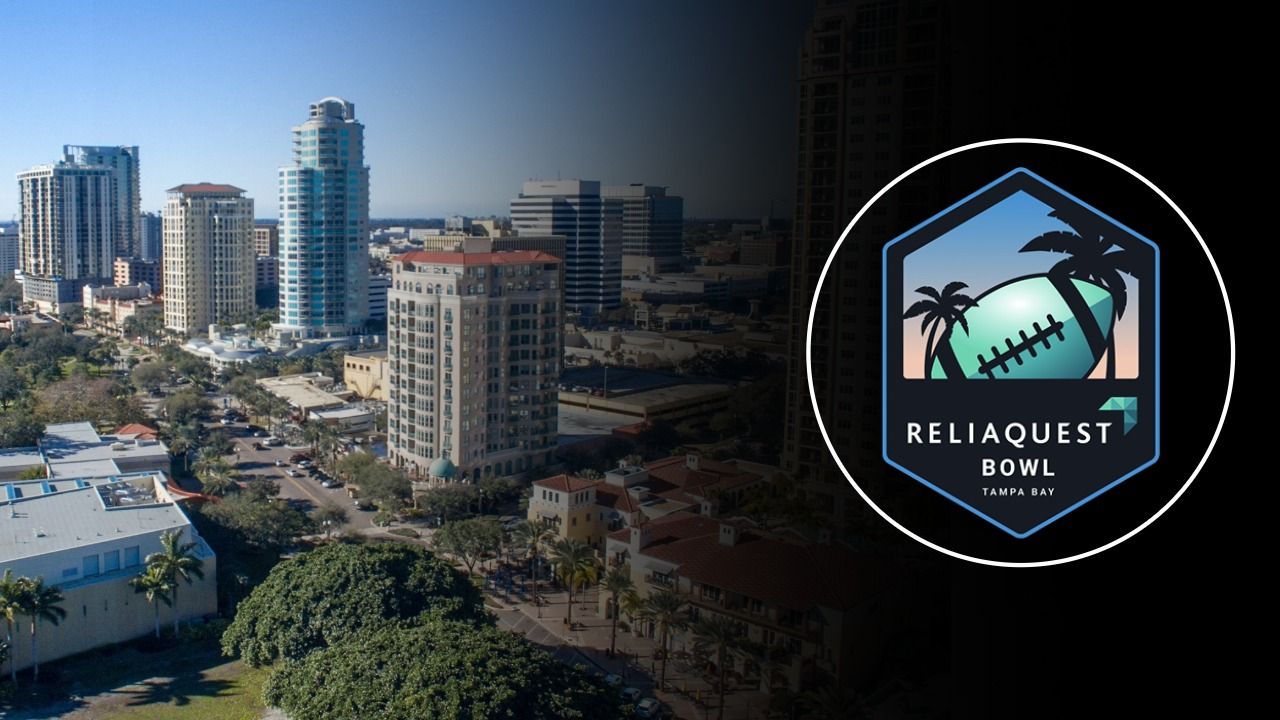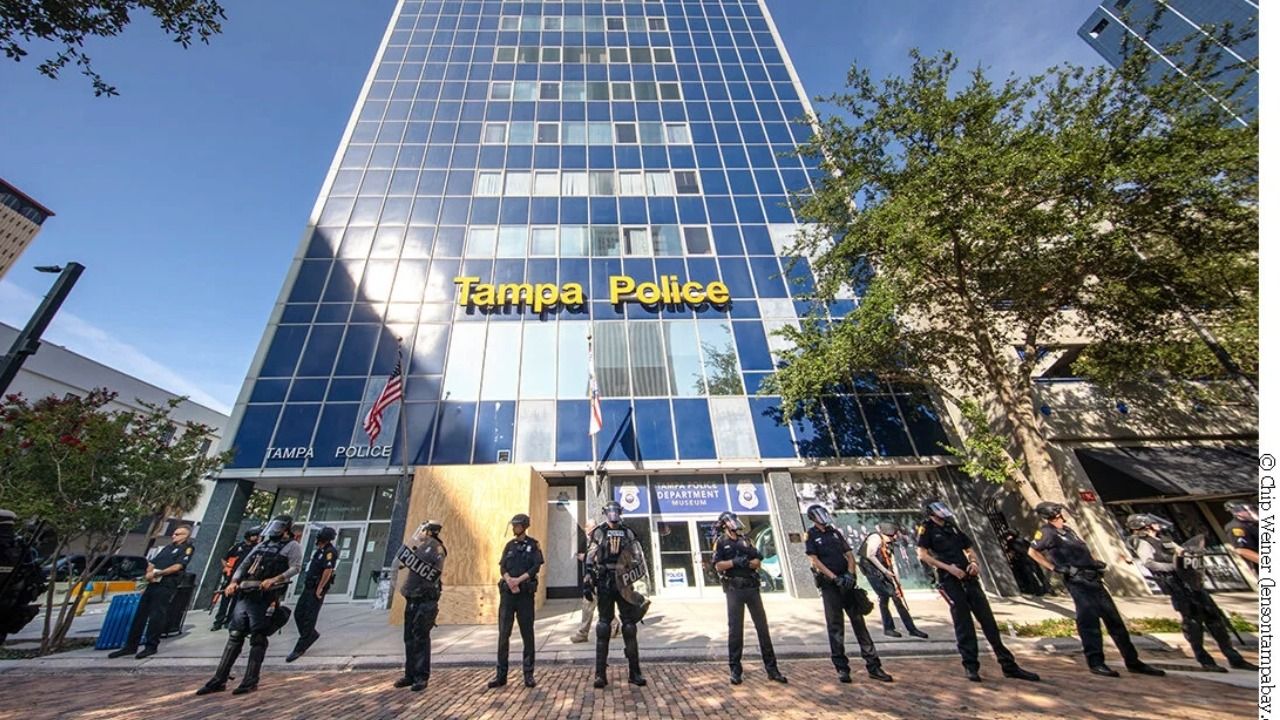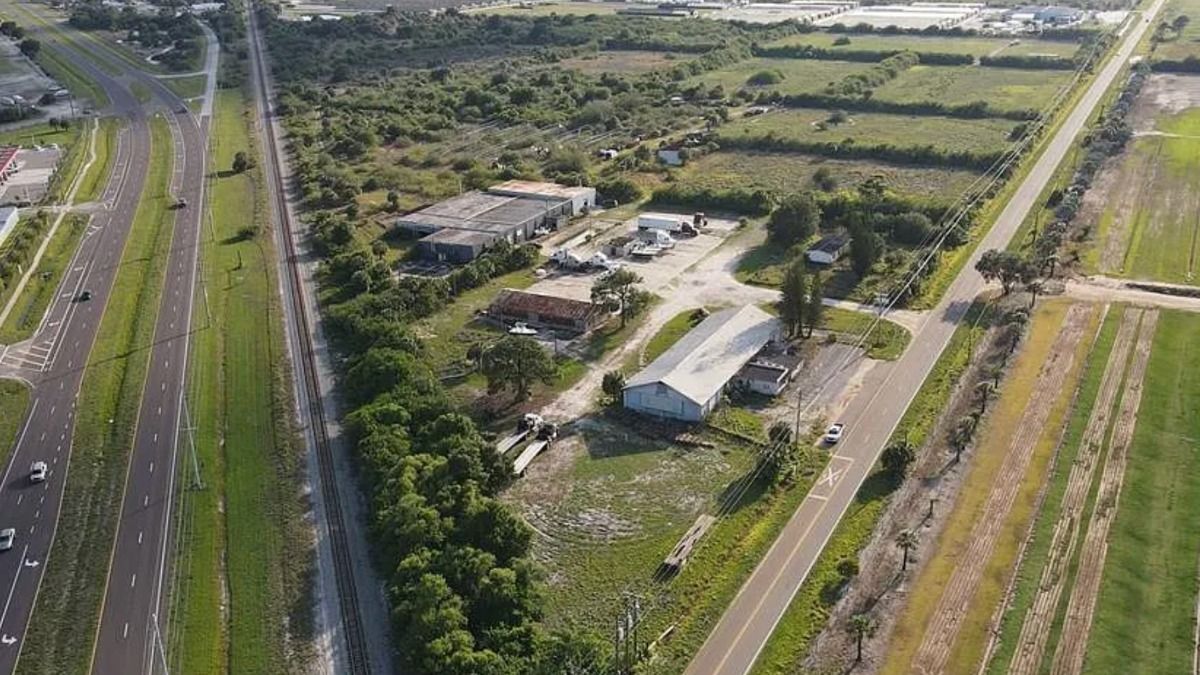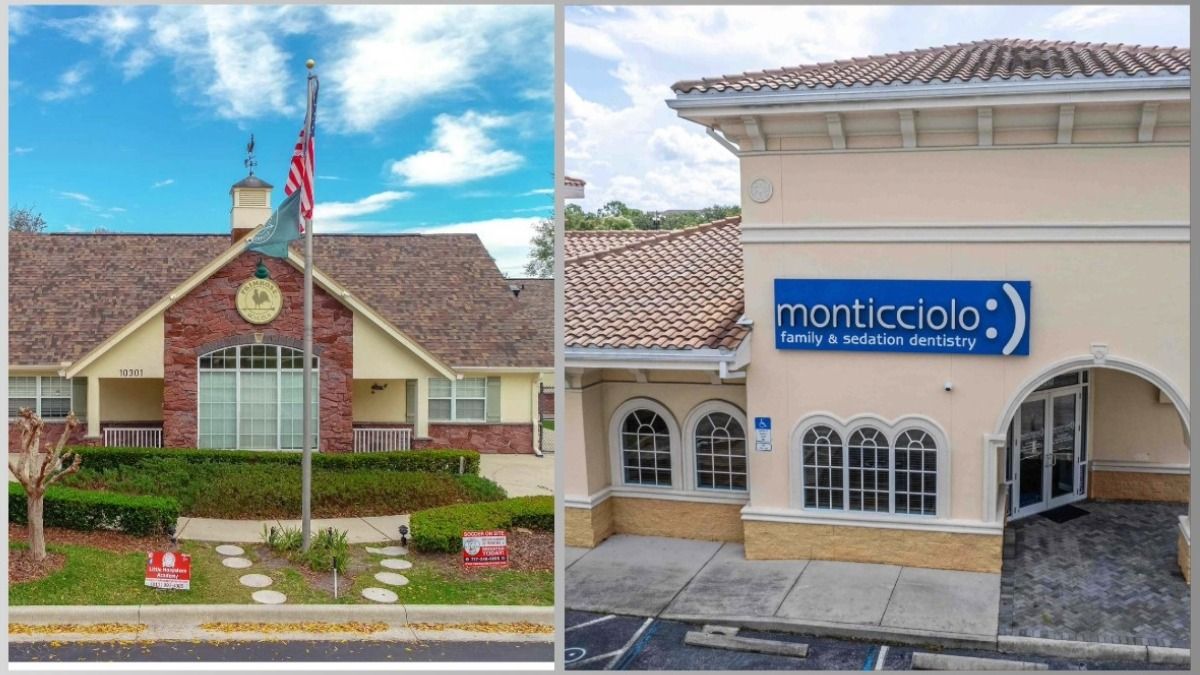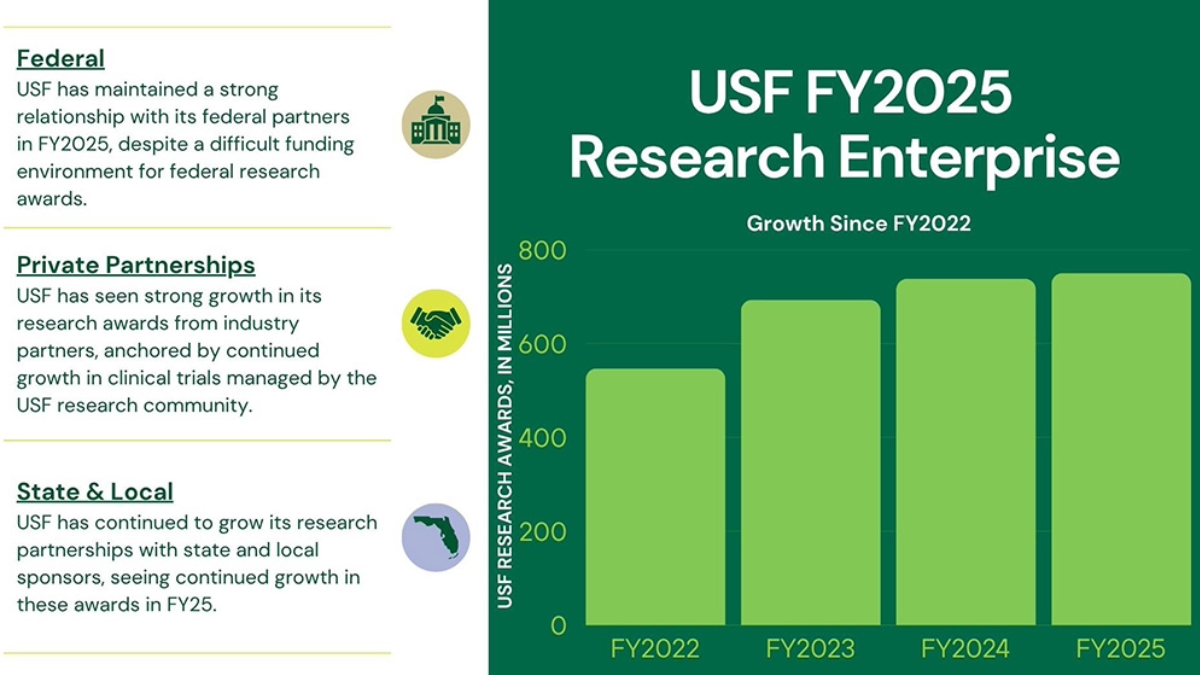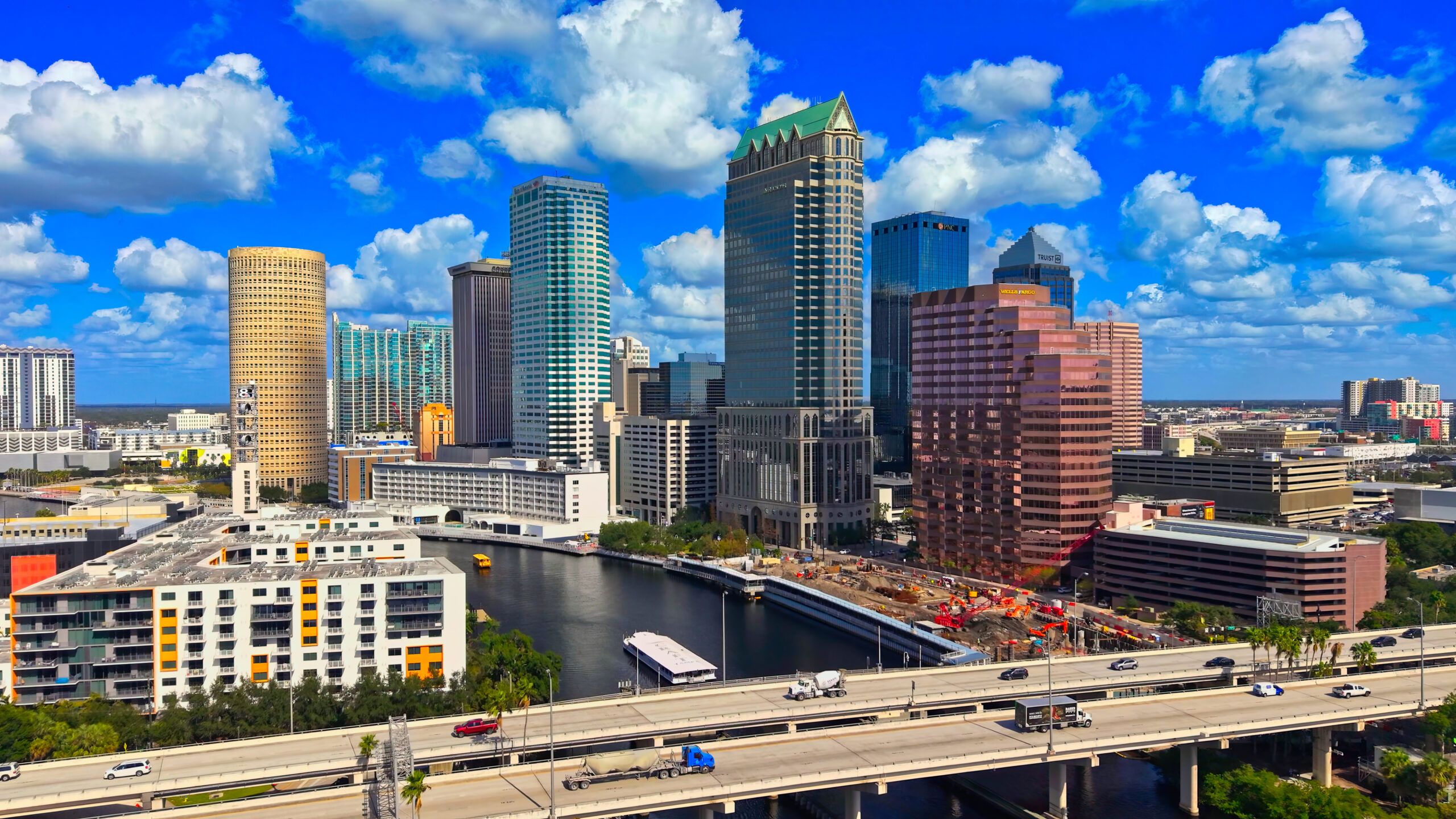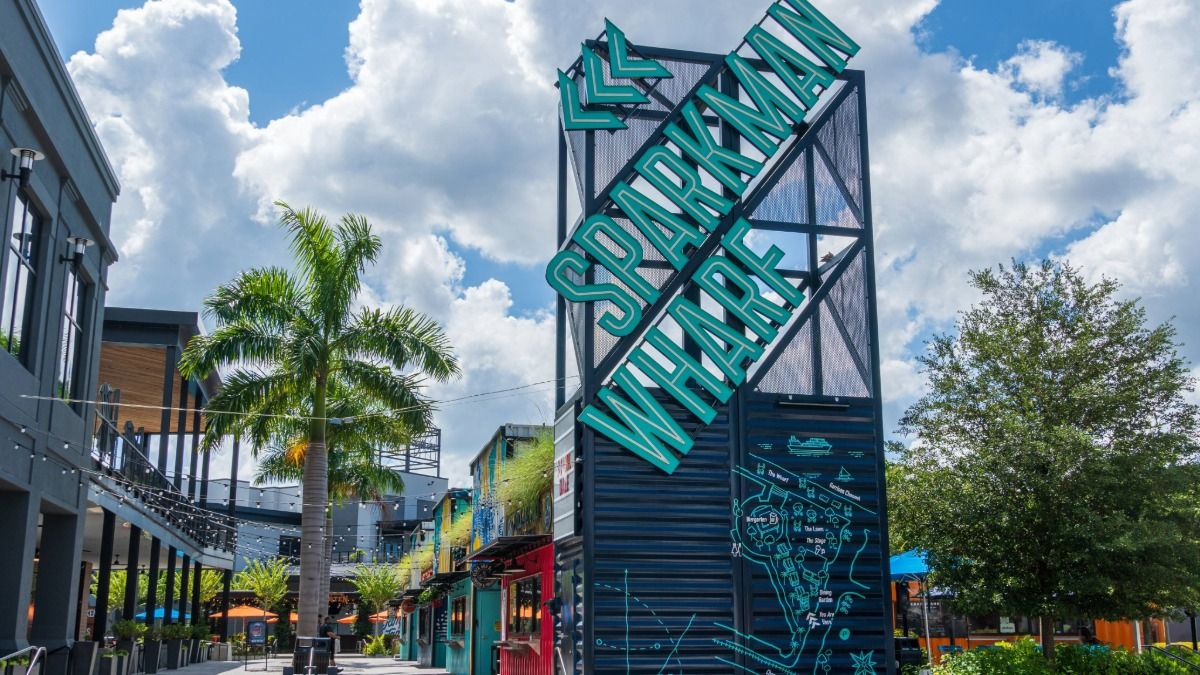The Tampa Bay area is poised for significant economic developments in 2025, with key industries like technology, real estate and tourism leading the charge. As the region continues to attract investments and talent, these sectors are set to shape the local economy in unique ways.
Technology and Innovation
Tampa Bay’s technology sector is on a robust growth trajectory, with significant developments anticipated in 2025. The region has experienced a 30% increase in IT job growth, over the past five years, and is projected to add over 3,700 jobs by 2027, marking a 14% growth, according to the City of Tampa.
The region is emerging as a hub for cybersecurity innovation, supported by initiatives like the CyberTech|X Accelerator, at the Tampa Bay Wave, which fosters early-stage startups developing cutting-edge cyber products.
Organizations like Tampa Bay Wave and Embarc Collective have been instrumental in launching over 500 startups, creating more than 5,000 jobs, in the past decade.
Events such as the Synapse Summit 2025 further stimulate innovation by bringing together industry leaders and entrepreneurs.
“As regional collaborations continue to strengthen, we expect 2025 to be a significant year for Tampa Bay’s technology and innovation community,” says Linda Olson, chief executive officer of the Tampa Bay Wave.” Recent federal grants will lead to new sources of early-stage capital emerging for startups, as well as expanding our region’s tech reputation.”
Real Estate, Development and Construction
Tampa Bay’s real estate and construction sectors are poised for significant developments in 2025, driven by population growth, economic expansion and evolving market dynamics.
The Tampa-St. Petersburg-Clearwater metropolitan area is expected to experience a 1.4% increase in home prices by August 2025, following a slight decline in 2024. This growth is attributed to a robust job market and an influx of new residents.
An uptick in housing inventory is anticipated, providing more options for buyers and potentially easing competition. This increase is due to both new construction and existing homeowners entering the market.
The construction industry is expected to see modest growth, with particular investment in health care, education and data centers. However, commercial construction may experience slower expansion, compared to residential projects.
A significant challenge is the persistent labor shortage, with the industry needing to add over 450,000 workers by 2025, to meet demand. This shortage could lead to project delays and increased labor costs.
To get a better scope of the predicted 2025 real estate market in Tampa Bay, TBBW reached out to Joanne LeBlanc, vice president at Colliers.

What is the state of the commercial real estate market in Tampa, moving into 2025?
Tampa is telling a different story than the rest of the nation due to one thing – people.
The Tampa Bay market has 170 net new people per day moving to the region. We now have over 22 million people in the state versus 10 years ago, when Florida had 19 million people. This tells us that people aren’t moving out once they’re here. And why would they? Tampa boasts a diverse local economy, a business-friendly climate, quality of life, 360 days of sunshine and no income tax.
This in-migration is, in part, due to businesses that are relocating, expanding and investing their companies into the Tampa Bay region. This is having a positive effect on the commercial real estate market.
Rental rates are the highest they have ever been. Industrial/flex space is competitive, and in high demand, due to the increase in e-commerce. Office space is still in flux but with Disney, Amazon and 3M announcing full-time back to the office, there seems to be a shift in getting people back to work in office space.
For businesses looking to relocate, what should they know? What questions should they be asking?
Planning is key. If you’d like to customize commercial space, the process takes about 12 months from touring, negotiating, designing, permitting, and construction, to completion.
If you want to come in and test the market, Landlords are willing to provide three-year lease terms. This would be to take the space as-is, with no retrofit. If you desire a 12-month term, or shorter, seek an executive suite center.
What are trends? What office buildings are hot and why?
Midtown, Water Street and Heights Union are the newest, mixed-use construction projects that are in high demand. These campuses boast the area’s latest restaurants and attractions. Companies are willing to pay upward of $60 per square feet, and sign long-term leases, to be at these buildings because of the walkability and entertainment factor that these locations provide.
For existing buildings, MetWest and Urban Centre are the others that are in demand, with onsite and nearby amenities. Here, you can get second-generation space for a shorter-term lease (5-7 years) and pay in the high $40’s/sf.
Major Projects
Historic Gas Plant District Redevelopment: A $6.5 billion project, in St. Petersburg, aims to transform the Historic Gas Plant District, including a new $1.3 billion stadium for the Tampa Bay Rays. The stadium was slated to open for the 2028 season, with construction set to begin in early 2025.
As of the time of press for this issue, the project was facing significant challenges. In October 2024, Hurricane Milton caused extensive damage to Tropicana Field, the Rays’ current home, leading to delays in the approval of bonds necessary for the new stadium’s funding. The Pinellas County Commission has postponed its vote on the $600 million public financing portion, creating uncertainty about the project’s timeline.
In response to these setbacks, the Rays announced plans to play their 2025 home games at George M. Steinbrenner Field, in Tampa. The team remains committed to the new stadium project but acknowledges that the opening may be delayed, beyond the 2028 season, due to the current obstacles.
Ybor City’s Gas Worx: The Gas Worx project is a transformative, 50-acre mixed-use development situated between Tampa’s Ybor City and the Channel District. Spearheaded by developer Darryl Shaw, in partnership with KETTLER, the project aims to seamlessly connect these historic neighborhoods. Upon completion, Gas Worx will feature approximately 5,000 residential units, over 500,000 square feet of office space and more than 140,000 square feet of retail space. A central element of the development is the revitalization of a 28,000-square-foot warehouse into a vibrant marketplace with indoor-outdoor seating, serving as a communal hub. The design emphasizes pedestrian-friendly streetscapes including the creation of 3rd Avenue Paseo, a new thoroughfare that will prioritize foot traffic and outdoor dining. Additionally, Gas Worx will introduce a three-quarter-acre park featuring open lawns, tree-lined promenades and a cooling water feature, enhancing the area’s green space. The first residential building, La Union Apartments, opened in late 2024, marking a significant milestone in the project’s phased development.
Tourism and Hospitality
Tampa Bay’s tourism and hospitality sectors are poised for continued growth in 2025, building on recent successes and adapting to emerging trends.
In the first quarter of 2024, Florida welcomed 40.6 million visitors, a 1.2% increase from the same period in 2023. The Tampa Bay area contributed significantly to this surge, with Hillsborough County achieving over $1 billion in taxable hotel revenue for the second consecutive year.
Hillsborough County’s hotel occupancy rates exceeded 78% in early 2024, surpassing both state and national averages. This robust performance underscores the region’s appeal to both leisure and business travelers.
Update on Tampa Bay Beaches Recovery and Rebuilding
Hurricanes hitting the Tampa Bay region in 2024 affected local businesses; with 23% of Pinellas County hotels reporting closures due to storm damage. Recovery efforts are ongoing, highlighting the industry’s resilience.
TBBW reached out to Robin Miller, chief executive officer of the Tampa Bay Beaches Chamber during the time of the storms, and weeks following. As of press time for this issue, Miller had accepted a position as CEO of Blowing Rock, North Carolina, Chamber of Commerce.
The obvious question is, just how profound was the destruction in the beach community?
The impacts of these storms will not be a distant memory for many months to come. There are businesses that will never reopen, due to the destruction, but some also because they just can’t financially hold on to repair or rebuild and have made the decision to sell or permanently close. This is an overwhelming negative economic impact on our barrier islands.
What’s the status? What are the hard-hit areas that still need support from the community?
Support from the community needs to come in spending—spending time at local establishments to support the rebuild process. Every beach has needs, in many ways. Our biggest challenge is permitting, to get people back into their businesses and homes.
What are some of the ways the chamber has been crucial in helping those affected? How can readers support the chamber in its work to support the community?
We immediately opened three resource centers, in partnership with Duke Energy, the Tampa Bay Rays and HCA hospitals. Additionally, we raised funds to give back to unemployed hospitality workers. Donations can be made through our website. Finally, we have performed more than 85 mini reopening ribbon-cuttings to let people know what is open.
What should TBBW readers know? Some of our readers don’t fully grasp what they see in photos or on TV.
Readers should know that our communities may have fewer tourists and residents, but we are open. We still have amazing sunsets and many places to visit. Be patient with us and we will continue to make positive progress.
Port Tampa Bay
Port Tampa Bay, Florida’s largest and most diverse seaport, has significantly bolstered the regional economy. A 2023 economic impact report by Martin and Associates revealed that the port contributes $34.6 billion to Florida’s economy and supports over 192,000 jobs, effectively doubling its economic influence and employment figures since the previous 2015 study.
Looking ahead to 2025, Port Tampa Bay is poised for continued growth. Ongoing infrastructure projects, such as the development of the multi-use “Omniport” terminal, are expected to further boost cargo volumes and economic output. Additionally, the port’s location and capabilities position it to capitalize on expanding trade opportunities, particularly with Latin American and Caribbean markets.
TBBW reached out to Paul Anderson, chief executive officer at the Port, to learn more about what the next 12 months could bring, in growth and impact.
The Port has had a year of many accomplishments, what was the most significant?
This is a tough question to answer because 2024 has been a banner year.
This summer, we welcomed a new cruise line partner, Margaritaville at Sea. The newly designed Margaritaville at Sea Islander set sail on her inaugural voyage, in June, departing from Port Tampa Bay. The fully reimagined ship spans 12 passenger decks, accommodating up to 2,650 passengers and offers an array of exciting new dining, entertainment and island destinations. In 2025, the ship will add the additional island destinations of Belize, Jamaica and Grand Cayman on extended six- and seven-night itineraries.
Later this summer, we received word that the U.S. Army Corps of Engineers signed off on the port’s General Reevaluation Report to deepen our shipping channels. The move paves the way for the main portions of the navigable waterways that service Port Tampa Bay to deepen from 43 to 47 feet. The Tampa Harbor Navigation Improvement Study began three years ago, prior to being approved on Aug. 14, 2024.
The signing of the Chief of Engineers’ report by Lt. General Scott A. Spellmon brings us a step closer to unlocking greater economic potential and enhancing our region’s status as a leading gateway for global trade. By enabling a deeper navigational channel, we increase our capacity, remain globally competitive, and reaffirm our commitment to fueling the economic engine of our region.
The Port handled over 35 million tons of cargo during FY2024. The deepening of the channel will complement a container build-out program that has helped Port Tampa Bay establish itself as a supply chain solution and emerging container port, its fastest-growing line of business. Along with container terminal operator Ports America, the port has secured the addition of three post-Panamax cranes (bringing the port’s total to five), added a new expanded container gate, is expanding paved storage to a total of 100 acres and building a third deep-water berth.
Additionally, Port Tampa Bay will receive $22 million in grant funding, from the U.S. Department of Transportation, to support the expansion of a berth and uplands area at East Port “Omniport”, one of Port Tampa Bay’s newest port complexes. The expansion will create a deep-water berth capable of supporting a variety of cargoes.
The port’s funding allocation is part of $2.7 billion in grant funding, made available through the Infrastructure for Rebuilding America Grant Program. The grant program provides funding for multimodal freight and highway projects of national or regional significance to improve the safety, efficiency and reliability of the movement of freight and people i,n and across, rural and urban areas.
Port Tampa Bay will use the INFRA funds to increase the existing Omniport facility from 18 acres with a 400-foot wharf, to roughly 27 acres with a 675-foot wharf capable of berthing vessels longer than 800 feet.
The East Port Omniport project will have a generational impact on our community, in terms of economic development. This specific project will create nearly 1,700 new jobs in the first year of operation, paying $143 million in personal income. Additionally, the project will pour nearly $100 million in business revenue, state and local taxes and local purchases.
The East Port expansion is a pivotal $37 million project, with $22 million in funding provided through the federal INFRA grant program and substantial, additional investment from private sector partners.
What are some areas for growth in the coming year?
Port Tampa Bay, along with container terminal operator Ports America, has accommodated the growth in Florida by staying ahead of the curve, thanks to our terminal build-out program. Recent expansion includes a new expanded gate complex and the recent delivery of three additional STS post-Panamax cranes, for a total of five. Construction is currently underway to add 30 acres of paved storage for a total of 100 and a berth extension from 3,200 to 4,500 linear feet.
Additionally, our cruise business continues to grow and expand. In fact, we are receiving so many requests for additional sailings from our cruise line partners that we anticipate being at capacity with our current cruise terminals and we have begun exploring plans to build a fourth terminal, soon. We also expect to break our all-time cruise record for passengers in FY 2025.
Each 2,500-passenger cruise ship, the average size vessel that sails from Port Tampa Bay, brings an economic impact of more than $400,000 to the region’s tourism industry. In FY 2024, the port welcomed more than 1.1 million cruise guests, which brought $537,105,000 in total economic value.
As a major steel and lumber port, we have also seen expansion in our aggregate businesses. Late last year, the port’s board of commissioners approved three separate lease agreements to expand operations at Port Redwing. The agreements were approved with AJAX Paving Industries of Florida, Redwing Terminals and Pangaea Florida, to expand the handling of a variety of aggregates including limestone, granite and crushed concrete, cementitious products and several others. These materials will support roadbuilding, infrastructure and construction projects to keep pace with, and serve, Florida’s rapidly expanding population.
From an industry perspective, what is the current state of shipping/logistics?
Port Tampa Bay provides significant efficiencies and supply chain cost savings to the importers and exporters who serve the rapidly growing Florida market from the state’s distribution hub – the Tampa Bay/Orlando I-4 Corridor. The recent expansion of container services with Asia and Latin America via Port Tampa Bay, have been critical in serving Florida’s largest, and fastest-growing, market. Home to the State’s largest concentration of distribution centers, the Central Florida region has over 550 million square feet of DC space, right in Port Tampa Bay’s backyard.
This region is also one of the hottest industrial real estate markets in the country and Florida’s hub for distribution, logistics and manufacturing. Florida now has the 15th largest economy in the world and is the fastest-growing state in the country. Florida’s rapidly expanding population has already overtaken New York, making it the third-largest state. Home to nearly half of the state’s 23 million residents and welcoming a majority of the 140 million visitors each year, the Central Florida region is also the fastest-growing part of the state. In fact, three Tampa Bay counties, Polk, Hillsborough and Pasco, are among the fastest growing in the country.
Beneficial cargo owners are seeing significant savings in their drayage and distribution costs, as truckers make as many as three to four round trip deliveries per day from Port Tampa Bay to their distribution centers, which then serves the entire state. Customers also benefit from attractive northbound backhaul truck rates to extend their reach into markets throughout the Southeast and beyond.
Tampa International Airport – By David Krakow
In its recent Readers’ Choice Awards, USA Today named Tampa International Airport (TPA) the country’s “best large airport.” It was also named the best dining airport, in the same category.
With increased passenger traffic, new and expanded routes, high-profile capital projects and a new chief executive officer, it is clear that TPA, to use flight terminology, is ascending into clear skies as the second quarter of the 21st century beckons.
In 2023, TPA ferried 25.2 million passengers on its approximately 100 routes, a number they expect will rise to around 26 million next year. Owned by the Hillsborough County Aviation Authority, the airport is the 26th busiest in the United States, based on passenger traffic.
Another measure of the airport’s success is a flurry of new and/or expanded routes that began in the past month, and will continue into 2025.
Frontier Airlines announced recently that it was adding five nonstop destinations from Tampa, all launching in mid-December: Boston; Washington D.C.’s Dulles; Chicago’s O’Hare; Burlington, VT and Portland, ME. Delta will start nonstop flights to Austin, in June 2025, and Breeze Airways will offer nonstops, twice a week, to Erie, PA, starting in January.
Meanwhile, Air Canada recently announced twice weekly non-stops to Vancouver, starting in June 2025. The airport touted this as a convenient first leg for travelers looking to get to Asian destinations, such as Tokyo, Osaka and Seoul and will be the airline’s fifth non-stop route at TPA.
And speaking of Canada, Porter Airlines also recently announced seasonal service to Ottawa and Halifax and increased service to Toronto. Also, Delta has extended its popular nonstop flights to Amsterdam
In several months, there will be someone new shepherding the airport and its 670 employees: in November, the aviation board voted 4-1 to elevate Michael Stephens as its new CEO, effective April 2025. Stephens, who will be the airport’s fourth CEO and first African American, will replace Joe Lopano who will have served 13 years in the role upon his exit.
Stephens is currently the board’s general counsel and executive vice president for information technology services, human resources, government and community relations, risk management and business diversity. The airport says it expects to increase its employee count, next year, to around 700.
“I could not be more proud of Michael, who has truly been one of the most brilliant and well-rounded professionals I’ve ever had the pleasure of working with,” said Lopano at the time of Stephens’ promotion. “I have no doubt, given his track record and ties to this community, that he will be able to not only lead this organization through any challenge but to take it to new heights, as we enter the next era of aviation.”
There are also a number of capital projects at TPA, part of a 10-year plan that the authority says will cost approximately $3.8 billion.
A new international terminal, Airside D, is scheduled to open in 2028. Other main projects include the Red Express Curbsides where passengers not checking bags and having electronic boarding passes can bypass the ticketing level and go straight to their gates, from the main terminal, a project completed three years ago on the blue side and security checkpoint expansions at Airsides A and E. The airport is also getting back space in its short-term parking lot, due to recently completed construction.
In 2022, the airport’s economic impact on the region was approximately $11.2 billion. According to its budget documents, it expects operating revenues in fiscal year 2025 of $470 million, around $48 million more than FY24.
Details must still be worked out regarding Stephens’ compensation package and the April transition, but he expressed great admiration for his predecessor and the organization he is about to lead.
“Tampa International Airport is a beloved institution, and an industry icon, and I’m looking forward to leading our organization while building on an award-winning reputation of excellence,” he said after the board vote. “It will be an incredible honor to follow in Joe’s footsteps and lead some of the best talent in the business. I’m looking forward to this opportunity to build onto the TPA legacy.”


